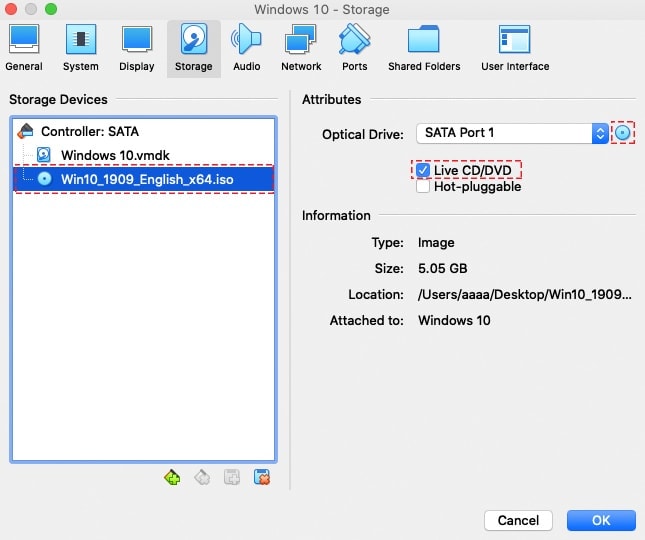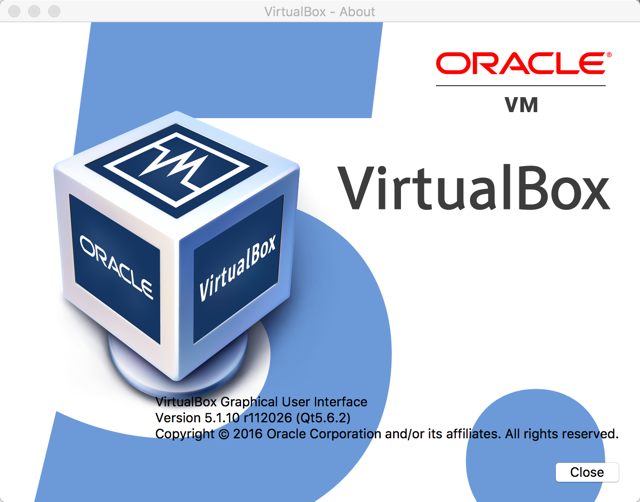

- #TRANSFER FROM PARALLELS TO VIRTUALBOX INSTALL#
- #TRANSFER FROM PARALLELS TO VIRTUALBOX FULL#
- #TRANSFER FROM PARALLELS TO VIRTUALBOX SOFTWARE#
This program integrates with your pointer and you’re able to create “snapshots,” one of VirtualBox’s main selling points. VirtualBox is loved as a Type 2 hypervisor mainly because it’s not required to reboot the system to run the other operating system on your computer nor maintain the typically more expensive Type 1 hypervisor systems. Additionally Type 1 hypervisors “run cloud-hosted environments, server virtualization environments, and virtual desktop infrastructure (VDI).” Type 2 hypervisors, though, run a single guest virtual machine on local systems. Some examples of Type 1 hypervisors include Hyper-V, Xen, and OpenVZ.
#TRANSFER FROM PARALLELS TO VIRTUALBOX SOFTWARE#
A Type 1 hypervisor, instead, is “host software that runs on what’s now known as ‘bare metal.’ ” This essentially means that it runs on a computer without an operating system. This product is a Type 2 hypervisor, so it’s a virtualization host software that runs on an already established operating system as an application.
#TRANSFER FROM PARALLELS TO VIRTUALBOX FULL#
It’s open-source, hence it’s free price tag, and has a large number of features to back it up.Īccording to their website, VirtualBox is “a general-purpose full virtualizer for x86 hardware, targeted at server, desktop, and embedded use.” And although this list is specifically for Windows computers, it’s nice to note that it’s also available on Mac and Linux machines. VirtualBox has passed through a few different hands but is now owned by Oracle. What’s better than great, functional software? Functional and free software. So, let’s take a look at the top OS virtual machine applications for Windows computers. This can potentially save you quite a bit of money by running multiple servers virtually on one computer.

One of the most used instances of this is to test software or applications in a different environment, rather than on a different computer. So, operating system virtualization allows your computer’s hardware to run many operating system images simultaneously. As most of you likely already know, virtualization means creating a virtual version of things, such as network resources or storage devices. After installation you will be ask to restart, that will usually solve the resolation right away.Using virtualization software to run different operating systems on one computer has become very popular in today’s technological world, and with good reason. It performs as an extra disk was insert to the VM so that the vm can run the program.īase on your system, it should usually just pop up installation prompt after you click that button.
#TRANSFER FROM PARALLELS TO VIRTUALBOX INSTALL#
To solve this problem, we just need to click “Device > Install Guest Additions” on VirtualBox menu when a VM is running. Install Guest Additionīy default your vm will just run in a little window and will not adjust its resolution with the window size. It works for me right away for both Windows and Ubuntu. Select your vm and click the “start” button to give it the first run. Then the VM is created, it should show up the list vm list in the left side of the main VirtualBox screen. Confim you have it selected and click “Choose”, then click “create”. In the “Hard disk” step, we need to select “Use an existing viryual hard disk file”, and click the file icon on the right hand:Ĭlick the “Add” button and select the “.hdd” file we copied from Parallel Desktop.Īfter you select the file it will show up in the list. Input The new VM name and select the System info based on your situation, and “continue”: So open your VirtualBox and Select “New”: Next step is easy, in my case it’s Ubuntu. I usually just copy it to the VirtualBox folder: hdd file and select “Show Package Contents” again:Ĭopy it out and rename is with what you want to but with file extension of. pvm file and select “Show Package Contents”: pvm are the VM files for Parallel Desktop, to get the Diskfile for each vm, just right click each. To get the disk file from Parallel Desktop, on Mac OS, they are usually under ~/Parallels/*.pvm. The disk file is the only file that is needed for VirtualBox, as all the OS System and your own documents are already there, VirtualBox just needs to serve as a container to run it. So this article is just a quick note about the process.

Luckily I found VirtualBox, which is free and open source.Īs I already have things setup in my Parallel Desktop VMs, so it would make sense if I can reuse them instead of creating new machines. So I decided to find a cheaper or free alternative. A $99 renew for maybe another two times open of it just does not make senses to me. Over the last 12 months I had only been using vm for very limited reasons, and probably ended up only opened Parallel Desktop for twice.

My Parallel Desktop subscription ended again when today I was trying to use my Windows VM to test out a page on IE.


 0 kommentar(er)
0 kommentar(er)
